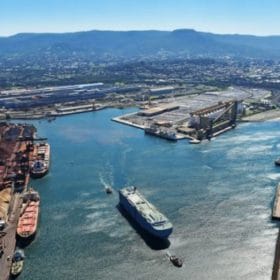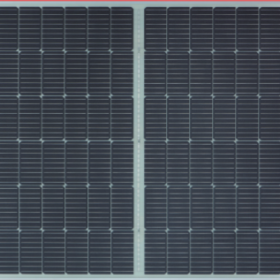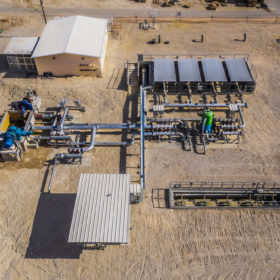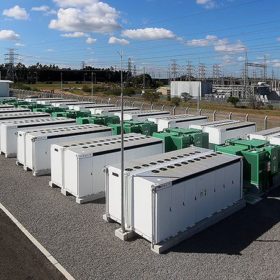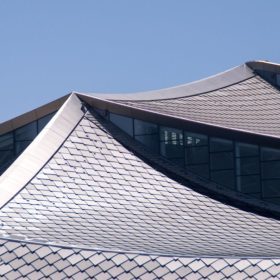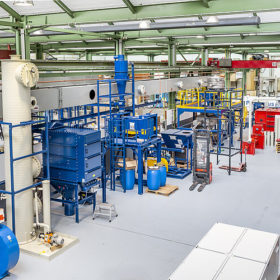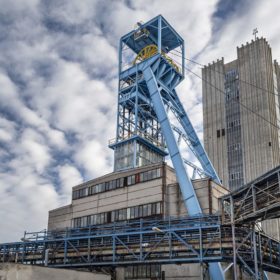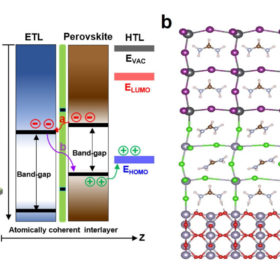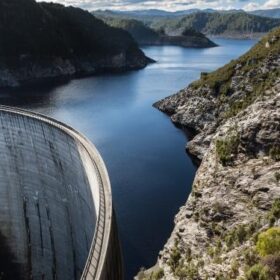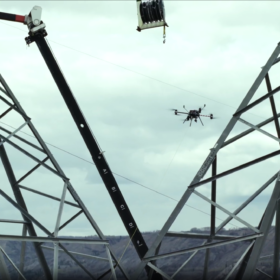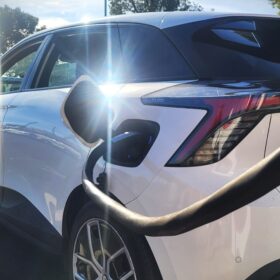BlueScope and Rio Tinto green steel each other for carbon reductions
It may just be an MOU, and there are no timeframes attached, but the agreement between two major emitters to continue and prioritise their development of green-processes for producing steel from iron ore bodes well for Australian manufacturing strength and marketability.
Sunman unveils 430 W glass free solar module
The new product has a power conversion efficiency of up to 19.3% and a weight of 11.2 kg. The module is produced with glass fibre reinforced plastic, which the manufacturer says reduces light reflection and opens up new assembly options.
How giga will interest in NSW’s latest REZ go?
Overwhelmed by interest in its proposed Central-Orana Renewable Energy Zone and then in the New England REZ, the New South Wales Government has now opened the floodgates to the South-West.
Compressed-air storage for commercial applications
Israel-based Augwind has built its first 250 kW/1 MWh compressed air storage system for the collective community of Yahel, in the southern, desert part of the country. The commercial scale facility will be connected to a PV system and will be used for behind-the-meter services.
Synthetic inertia put to test with Wallgrove big battery registered
The ability of grid-scale batteries to provide fast frequency response and synthetic inertia services to the National Energy Market will be put to the test with infrastructure service provider Lumea confirming commissioning of the 50 MW/75 MWh Wallgrove Grid Battery in Western Sydney has commenced.
Dragonscale solar tiles installed on Google buildings
Some 90,000 individual solar panels will generate enough electricity to cover around 40% of the electricity used in two buildings for Google.
Innovative Australian battery materials projects gain momentum at home and abroad
A number of Australian battery material recovery projects got off the ground this week, including the completion of Western Australian outfit Neometal’s battery recycling demonstration plant, a Queensland-Japanese joint venture studying the extraction of cobalt from copper tailings as well as the funding of Sydney-based startup Novalith.
Plastic for solar panels?
Three companies are swapping out aluminium and glass in favour of plastic to save weight and add flexibility. We look at the pros and cons.
Converting coal mines into gravity-based renewable energy storage facilities
U.K.-based Gravitricity is planning to deploy its gravity-based energy storage solution at a decommissioned coal mine in Czechia. The project is part of a plan to commence a full-scale, 4-8 MW prototype scheme in a disused mine next year.
Korean researchers achieve 25.8% efficiency for single junction perovskite solar cell
The record efficiency was obtained thanks to an interlayer placed between the electron-transporting layer and the perovskite layer, which eliminated the need for passivation. The cell was also able to retain around 90% of its initial efficiency after 500 hours under standard illumination.
